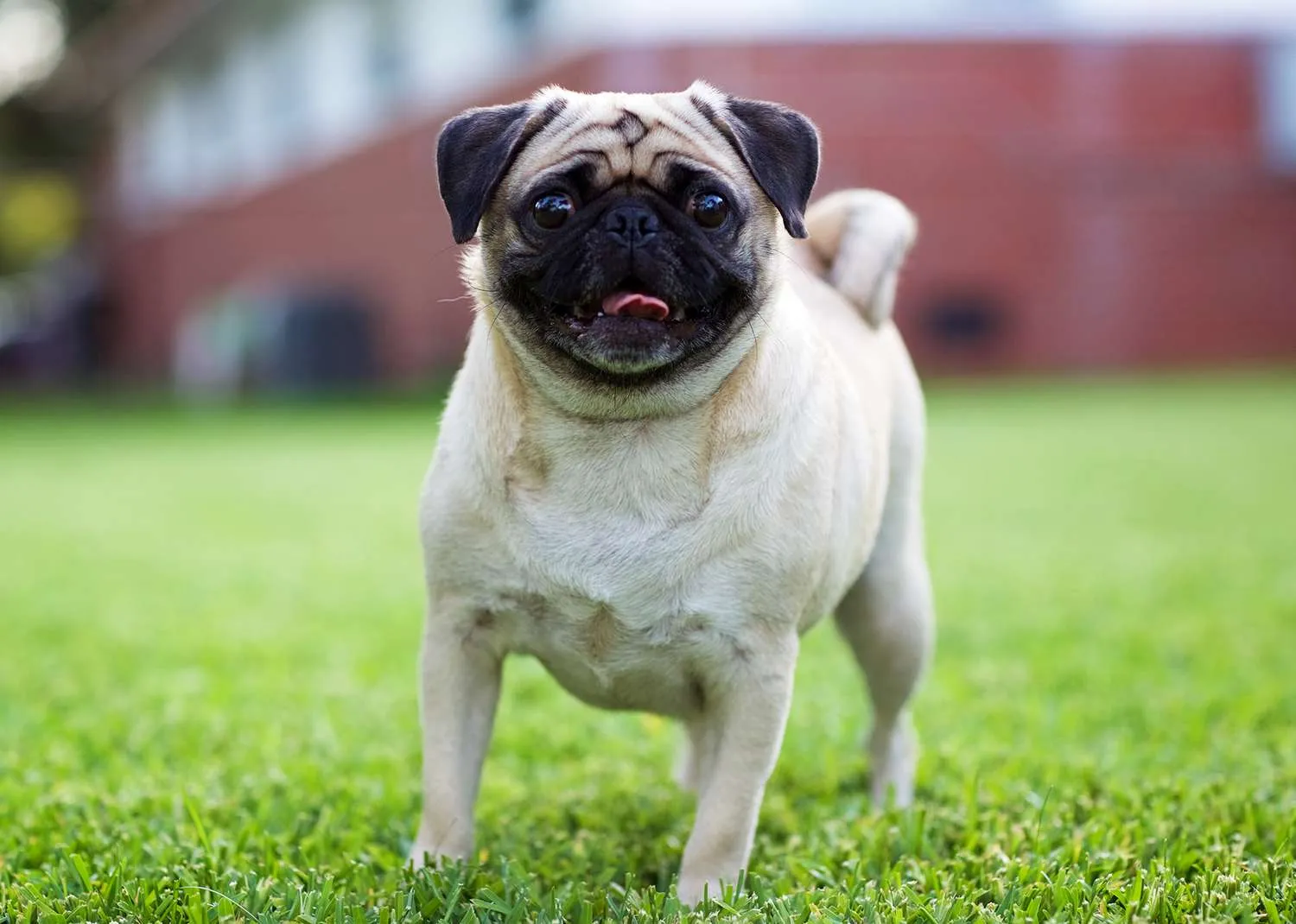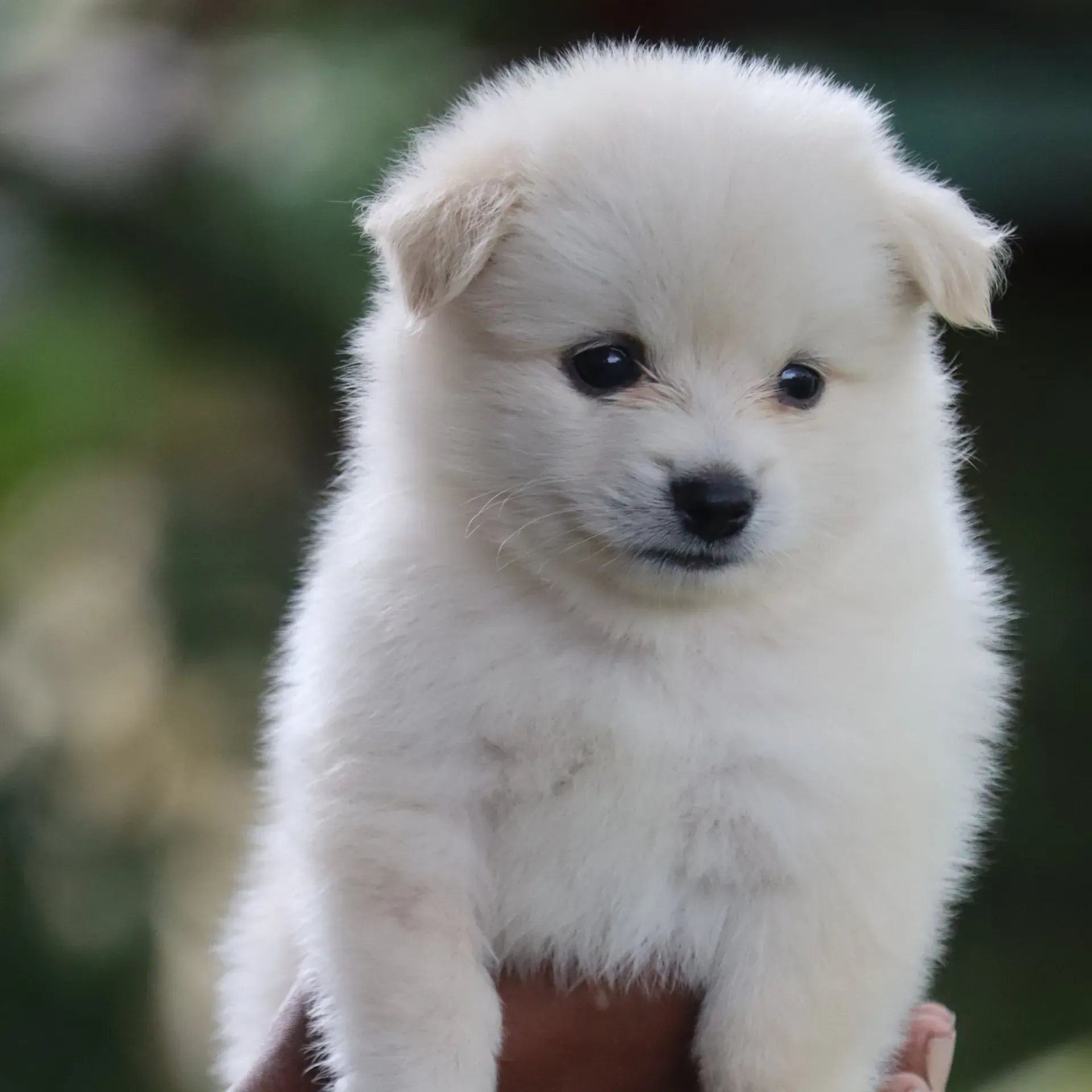All Pets
Directory
News & Stories
Shelters & Rescues
Home
/
Dog Breeds
/
Pug
Pug
Origin
China
Size
Small Breed
Ideal Space
Apartment
Ideal Weather
15º-24ºC
Avg Monthly Expenses
₹2,200
Basic Lifestyle
₹3,750
Premium Lifestyle
Top 5 Traits
Playful
Loyal
Lazy
Intelligent
Protective



by Happy Pet Team
Pug Dog Breed introduction and Origin
Characteristics
Barking
Quiet
Loud
Temperament with Kids
Aggressive
Friendly
Playfulness
Silent
Very Playful
Friendliness
Not Friendly
Super Friendly
Compatibility with other dogs
Aggressive
Friendly
Need for attention
Independent
Very Needy
Monthly Expenses
Coat Variants of Pug



Featured
Pug PUPPIES FOR YOU

Pug Nutrition and Care Guide
Monthly Food Expenses
₹ 1,200 - ₹ 1,800
Calories per day
Puppies: 500 kcal
Adults: 400 kcal
Essential Nutrients
Protein
Fats
Carbohydrates
Minerals
Vitamins
Fibre
List of foods
Chicken
Dry Dog Food
Fresh Meat
Fresh Fish
Home made meals
Vegetables
Breakdown of Macro-nutrients
Guide to choose Quality Food for Pug Dogs
Never Feed These Foods to Pugs
Avoid anything with these ingredients
Alcohol
Grapes
Onions
Garlic
Mushrooms
Salt
Coffee / Tea
Dairy
Fruit seeds

Health and care for Pugs
Avg Monthly Expenses
₹ 300 - ₹ 750
Common Health Issues
Bloat
Canine distemper
Heartworm
Hip Dysplasia
Parasites
Parvovirus
Well being
Agility Training
Exercise
Bonding
Games
Socialization
Energy Level
Medium
Exercise routine
30 - 60 minutes
Recognising Stress
Changes in appetite
Excessive Barking
Excessive Panting
Pacing
Reluctance to move
Increased laziness
Decreased play
Common Health Conditions in Pugs
Vaccination details
Growth Stage
Core Vaccines
6 - 8 weeks
DHLPP (distemper, hepatitis, leptospirosis, parainfluenza, parvovirus)
10-12 weeks
DHLPP ,Rabies
14 - 16 weeks
DHLPP ,Rabies
1 year
DHLPP ,Rabies
Recommendations for Senior Pug Care

Pug Grooming Guide
Avg Monthly Expenses
₹ 700 - ₹ 1,200
Shedding Level
Moderate Shedding
Hygienic Checklist
Bathing
Brushing
Ear Cleaning
Eye Care
Nail Trimming
Teeth Care
Benefits of Grooming
Cleanliness
Low Shedding
Odourless
Prevents Bad Breath
Prevents infections
Quality of life

Pug Dog Price In India
Cost of buying
₹ 10,000 - ₹ 50,000
Prerequisites to pet a Pug
Access to Groomer
Access to Veterinary
Appropriate Climate
Lifestyle Compatibility
Financial Capability
Pug breeders in India
Now that you know what it takes to raise a Pug, are you ready to take the next step to pet one?
Written by
Happy Pet Team
Author
Team Happy Pet is a passionate collective of pet experts, enthusiasts, and advocates dedicated to sharing trusted and insightful content. Our contributors include experienced pet parents, dedicated fosters, stray dog community workers, seasoned vets, aquarists specializing in aquatic pet care, and bird caretakers who nurture and cultivate avian well-being. We also collaborate with Subject Matter Experts (SMEs) in pet nutrition, behavior, exercise, and training to provide well-researched, practical guidance for pet owners. From cat lovers and dog trainers to bird enthusiasts and aquarium specialists, our diverse expertise helps every pet thrive. Whether you're looking for expert guidance or just a dose of pet-loving joy, Team Happy Pet is your go-to source for all things pets!
Compare with similar breeds
Frequently Asked Questions
How much exercise do Pugs require?
Pugs need between 30 and 60 minutes of exercise every day because of their moderate energy levels. For keeping them healthy and happy, short walks, fun, and brain-stimulating activities are ideal.
What is required for Pug grooming?
To maintain their fur and keep them clean and healthy, Pugs need frequent grooming. When necessary, they should be bathed and brushed at least once a week. Regular nail trimming and cleaning of the ears are also necessary.
Do Pugs frequently suffer from allergies?
Allergies, due to particular foods or environmental elements, can develop in Pugs. A vet should be consulted if you notice any signs, such as itching, redness, or ear infections.
What is the personality of Pugs like?
Pugs are affectionate, playful, and social. They thrive in family settings, enjoy companionship, and charm with their humorous, friendly personality.
How long do pugs live?
Pugs typically live 12 to 15 years, with proper care, a healthy diet, regular exercise, and routine veterinary check-ups playing a key role in their longevity.
Stay updated with the pet industry
Subscribe Now
Download our pet-parent app
© Excitado Innovations Pvt Ltd



























